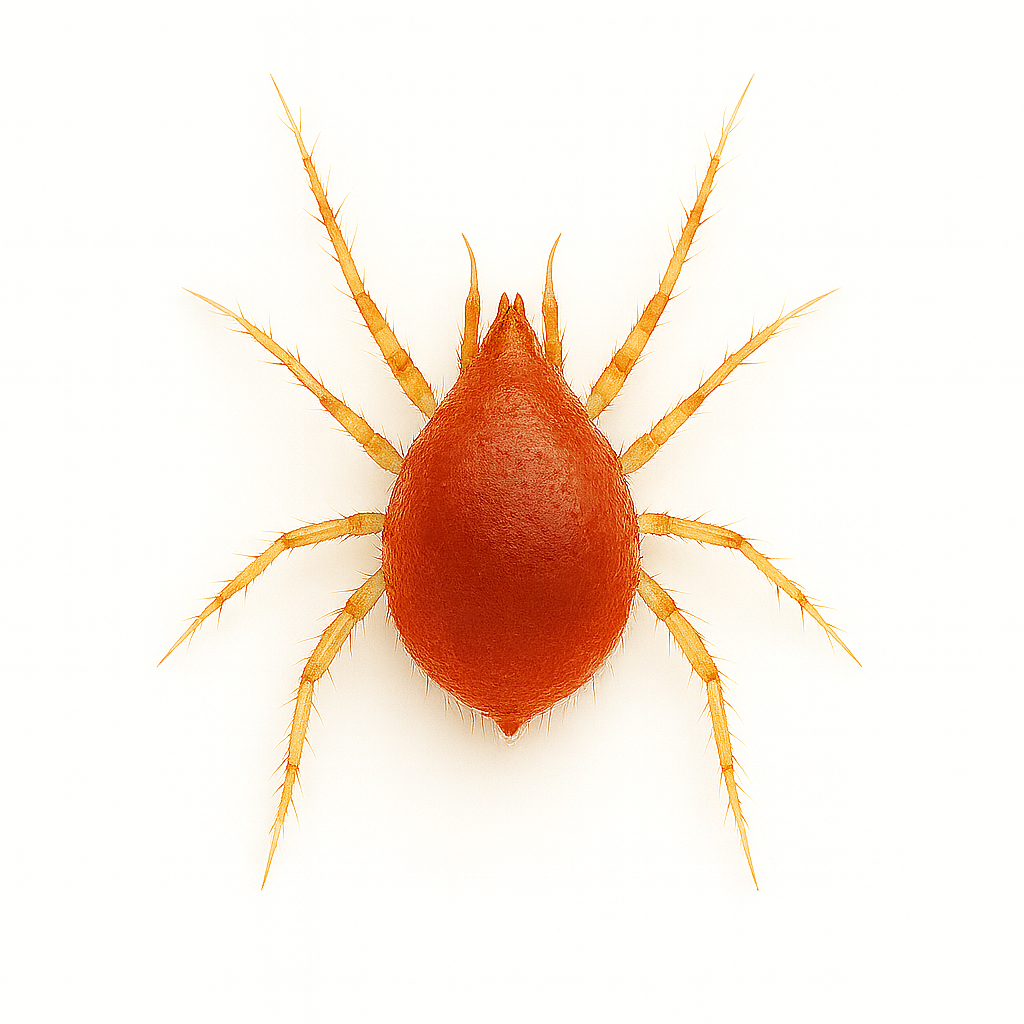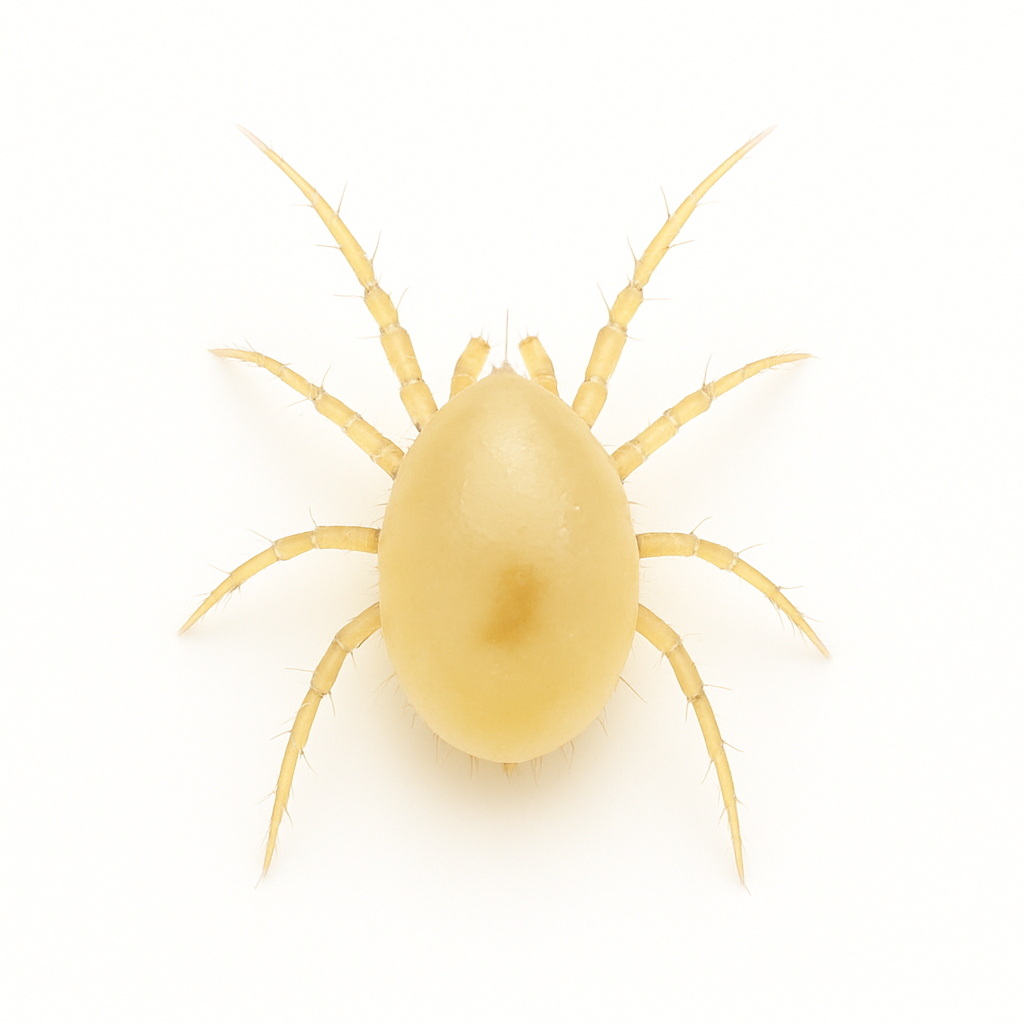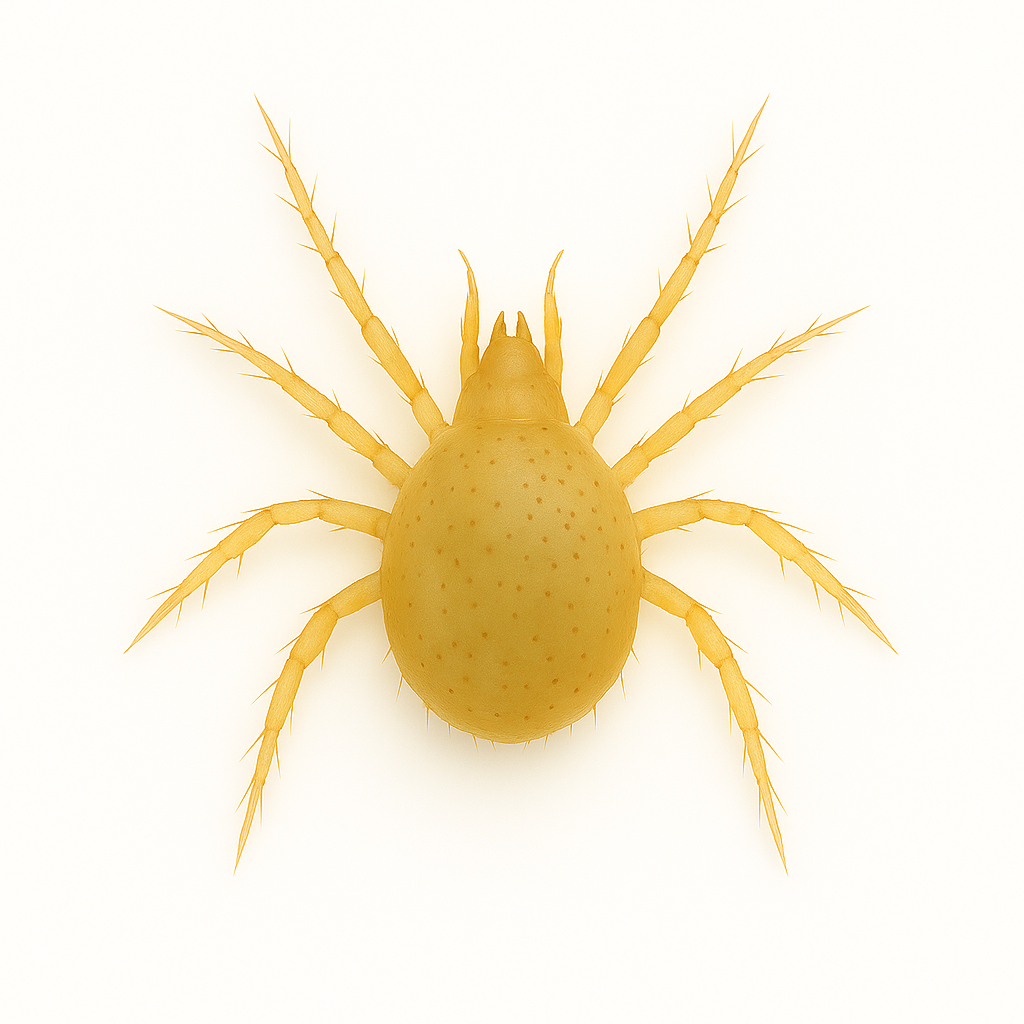Predators over Pesticides for Spider Mites?
Spider mites multiply fast and slip into hidden spots where sprays can’t reach. Predatory mites patrol every leaf surface, hunting them down until the infestation collapses. Instead of a quick chemical knockback, they build a living defense that adapts and keeps protecting your plants.
Built for Outbreaks
They get to work immediately — no mixing, no reapplication, no residue.
Go Where Sprays Can’t
Predatory mites crawl into webbing, leaf undersides, and dense foliage to reach the hidden hotspots.
Trusted by Growers
Phytoseiulus persimilis has been used in professional greenhouses for decades to collapse spider mite infestations quickly and cleanly.
Did You Know?
Predatory mites, on average, are only 0.5 mm. About the size of a grain of sand.
The Main Players
persimilis
Thrives in warm, humid conditions and shows the fastest results when spider mites are already present. Studies in greenhouse crops have consistently shown Phytoseiulus persimilis outperforming chemical sprays because it directly targets spider mites without harming plants or beneficial insects.
californicus
Well-suited to hot, dry conditions and able to persist for weeks even when prey is scarce. Research highlights that Neoseiulus californicus provides steadier long-term control than pesticides, which can create resistant spider mite populations after repeated use.
Introduce the Predators
Start by gently tapping the contents of the container over the affected plants. Areas with visible webbing or feeding damage — especially on leaf undersides — are ideal placement zones. There’s no mixing or dilution involved; they’re added directly to the canopy.
From there, the population settles in. Movement can begin immediately or take a few hours, depending on factors like humidity, light, and microclimate. Some individuals move deeper into the plant right away, while others pause or cluster before dispersing more widely.
Start the Search
Spider mites don’t hide as well as they think. Between the webbing, scent cues, frass, and damage trails, they leave behind a lot of information. Predators are well-adapted to read it.
Predatory often begin on the undersides of leaves, then progresses through junctions, petioles, and denser foliage. The path isn’t random. It’s guided by chemical gradients, subtle changes in moisture, and the metabolic signals of the pests themselves. Each new area is explored methodically until a viable feeding site is located.
Feeding Frenzy
Once contact is made, the predator grabs hold and uses its piercing-sucking mouthparts to consume the internal fluids of the spider mite. Feeding tends to start with juveniles and eggs, which are easier to subdue, but adults are targeted as well — especially once the population balance begins to shift.
Predatory mite reproduction typically follows feeding. Eggs are laid in proximity to active infestations, so that the next generation hatches into a still-viable hunting ground. Over time, this creates a layered population — multiple life stages working simultaneously to suppress the outbreak.
Colony Collapse
Spider mite colonies begin to unravel as reproduction slows and numbers shrink. The dense webbing thins, new leaf damage slows, and reproduction can no longer keep pace with losses. Even if adult pests remain visible, the system has tipped — and collapse is underway.
This doesn’t always look dramatic on the surface. Most of the change is happening at the population level: fewer hatchlings, fewer viable eggs, less momentum in the colony. But over time, the shift becomes obvious — especially when compared to plants that weren’t treated.
Time To Blow This Joint
When prey is no longer abundant, the predator population declines naturally. Some die off, others disperse in search of new food sources, and a few may linger in very low numbers if conditions remain favorable (they can find food from time to time).
There’s no intervention required. No chemical residue, no risk of resistance, no lingering side effects. Once balance is restored, the system winds itself down — quietly, efficiently, and with no trace left behind.









